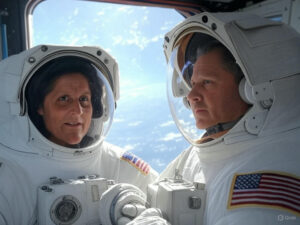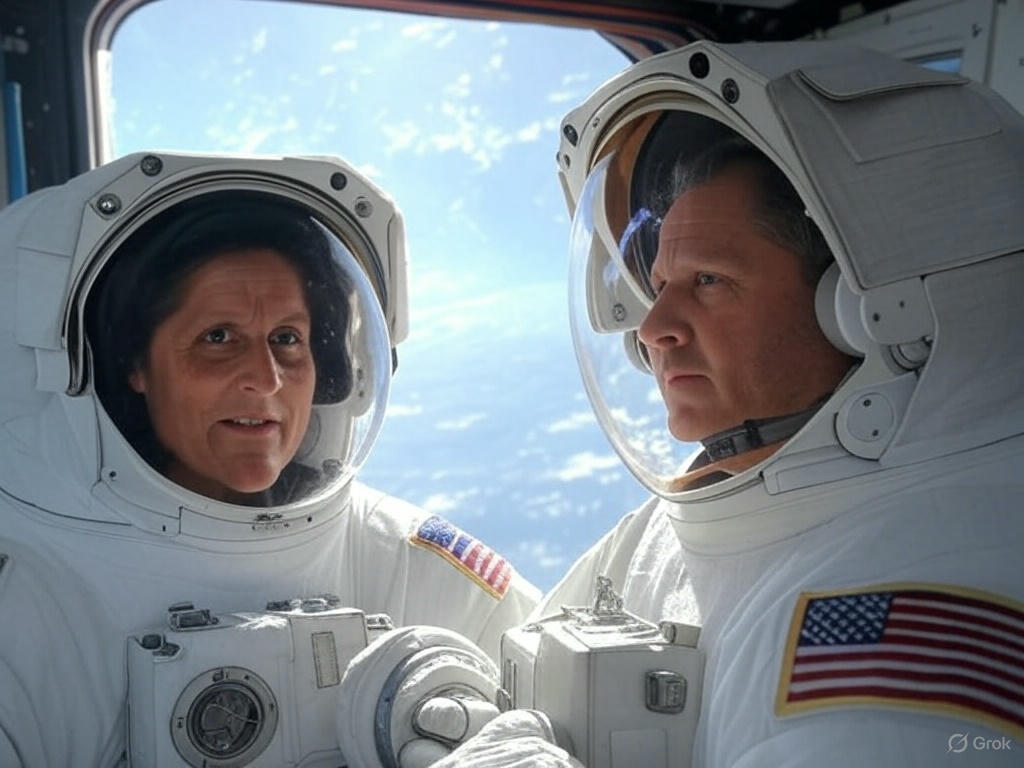The Unplanned Nine-Month Odyssey of Sunita Williams and Butch Wilmore
 The Unplanned Nine-Month Odyssey of Sunita Williams and Butch Wilmore
The Unplanned Nine-Month Odyssey of Sunita Williams and Butch Wilmore
What began as an eight-day test flight for NASA astronauts Sunita Williams and Butch Wilmore turned into a historic nine-month odyssey aboard the International Space Station (ISS). Launched on June 5, 2024, aboard Boeing’s Starliner spacecraft, their mission was derailed by technical failures, forcing an unprecedented reliance on SpaceX for their eventual return to Earth on March 18, 2025. This saga of resilience transformed the astronauts into full-fledged ISS crew members, spacewalk pioneers, and symbols of human adaptability in the face of cosmic uncertainty.
A Mission Derailed: Thruster Failures and Helium Leaks
Williams, 59, and Wilmore, 62—both seasoned NASA astronauts and former Navy test pilots—were tasked with certifying Boeing’s Starliner for routine crewed missions. However, during docking, the spacecraft suffered multiple thruster failures and helium leaks, raising immediate safety concerns. By August 2024, NASA declared the Starliner unfit for their return, opting instead to bring them home aboard a SpaceX Dragon capsule. The Starliner was later returned to Earth uncrewed on September 7, 2024, landing in New Mexico.
The decision stranded the duo on the ISS, extending their stay from days to months. “We’re test pilots—we train for the unexpected,” Wilmore later remarked during a press conference. “But no one trains for nine months in microgravity.”
Life in Orbit: From Guests to Record-Setting Crew Members
Rather than idly awaiting rescue, Williams and Wilmore integrated into the ISS crew, contributing to over 200 scientific experiments and critical maintenance. Williams took command of the station in late 2024, overseeing operations for three months and solidifying her legacy as one of NASA’s most accomplished astronauts.
Key Contributions:
-
Spacewalking Milestones: Williams shattered records, logging 62 hours over nine spacewalks—the most by any female astronaut. Wilmore supported repairs to the station’s solar arrays and life-support systems.
-
Scientific Impact: Their work included studies on plant growth in microgravity, radiation exposure, and fluid dynamics, with implications for future Mars missions.
-
Public Engagement: The duo hosted live Q&A sessions, inspiring global audiences with their humor and candor. “Don’t be afraid of change,” Williams urged during a PBS News interview. “Sometimes it leads to something extraordinary.”
The Return: A 17-Hour Journey Home
After multiple delays, NASA confirmed a March 18, 2025, departure. The SpaceX Dragon capsule undocked from the ISS carrying Williams, Wilmore, and two additional crew members—NASA’s Nick Hague and Roscosmos’ Aleksandr Gorbunov. The 17-hour descent culminated in a splashdown off Florida’s Gulf Coast at 5:57 p.m. ET, greeted by recovery teams and global media.
Rehabilitation and Legacy
The astronauts faced immediate physical challenges: muscle atrophy, bone density loss, and balance issues from prolonged microgravity exposure. They began a rigorous 45-day rehabilitation program in Houston, a standard protocol for long-duration missions. “Gravity is not your friend after nine months away,” Williams joked in a post-landing statement.
Global Reaction:
-
Indian media celebrated Williams’ achievements, highlighting her roots as the daughter of an Indian-American father.
-
The mission underscored the importance of redundancy in spaceflight, with SpaceX’s Dragon serving as a critical backup to Boeing’s Starliner.
Lessons for the Future
The extended mission revealed both vulnerabilities and strengths in NASA’s Commercial Crew Program. While Boeing’s Starliner faced scrutiny, the collaboration with SpaceX ensured crew safety. “Your human spaceflight program is here for you,” Wilmore asserted, emphasizing NASA’s problem-solving ethos.
Williams and Wilmore’s unplanned journey demonstrated the unpredictability of space exploration—and the ingenuity required to thrive within it. Their story, blending crisis and triumph, will inform protocols for future missions, ensuring that even the darkest moments in orbit can yield light.
Key Mission Timeline
DateEventJune 5, 2024Launch aboard Boeing Starliner for 8-day test flight.
June 2024Thruster/helium leaks detected; return delayed.
August 24, 2024NASA opts for SpaceX Dragon return.
September 7, 2024Starliner returns uncrewed to Earth.
March 18, 2025Dragon capsule splashes down off Florida after 9 months in space.
March 19, 202545-day rehabilitation begins in Houston.
In Their Words
-
“Space teaches patience. And humor.” —Sunita Williams, ISS commander.
-
“We didn’t just survive—we thrived.” —Butch Wilmore, on adapting to the extended mission.







